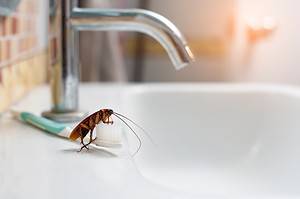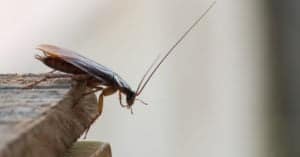Cockroaches live all over the world; they’re known as smelly pests who break into garbage bags and hijack basements. But, most cockroaches are undeserving of this reputation. Of the approximately 4,500 known cockroach species (and scientists think there are many more yet to be discovered), only about 30 are considered pest insects. The rest never come into contact with humans. Instead, they live out their lives without spreading disease or annoying homeowners. The cockroach life cycle is a fascinating one, and most of the time—it’s uninterrupted by humans.
Here, we’ll take a closer look at the entire cockroach life cycle; all the way from egg to old age. We’ll go over how female cockroaches create young cockroaches, and what these baby cockroaches look like. Then, we’ll take a look at how the adult life cycle progresses. Finally, we’ll explore the cockroach’s final life stage: death.
The Beginning: Eggs
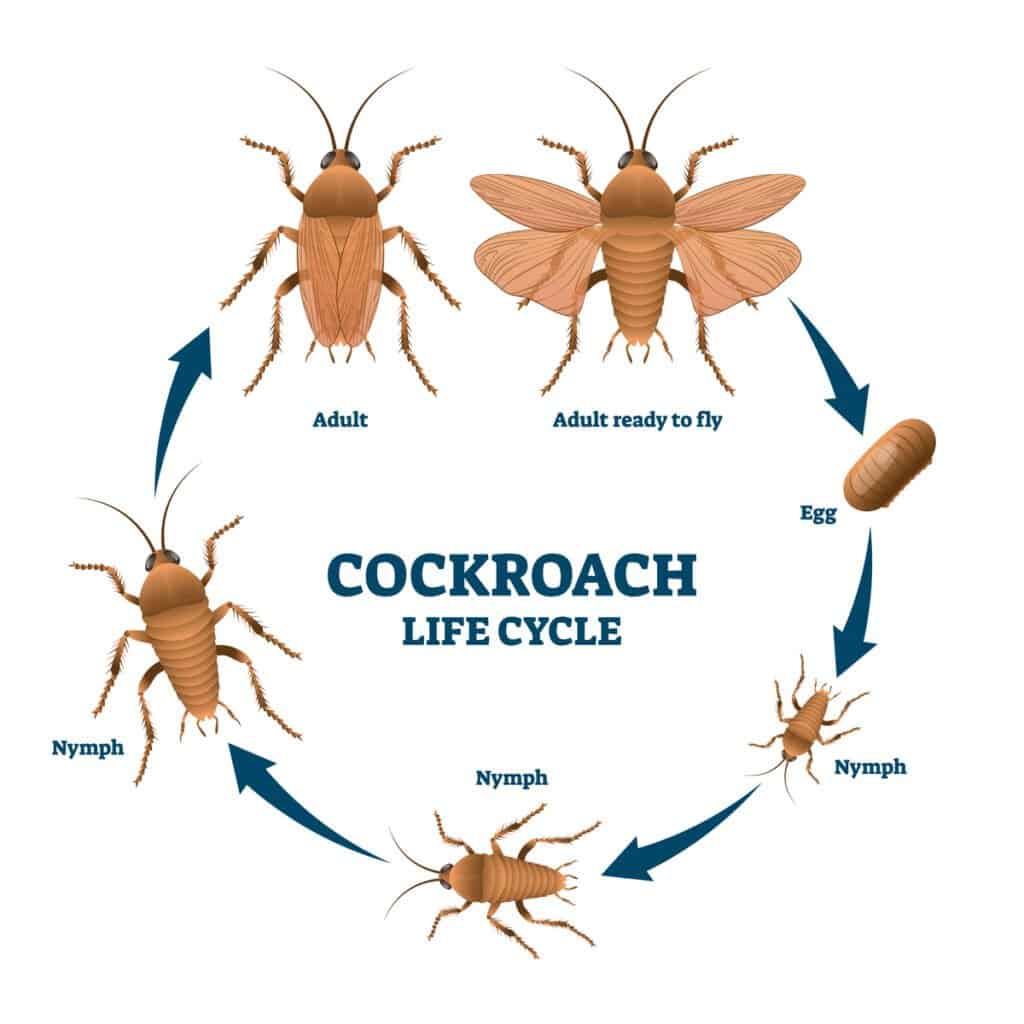
The cockroach life cycle includes three main stages: egg, nymph, and adult
©VectorMine/Shutterstock.com
Cockroaches have been around for about 350 million years; they’re one of the oldest species on the planet. They’ve changed little in all that time, except for one thing; ovipositors. Unlike the roaches of yesteryear, today’s roaches have internal ovipositors. Ovipositors are the body parts that produce eggs, and because they’re located inside the cockroach’s body, they enable the roach mother to do a couple of different things with her eggs.
All cockroaches produce and hatch from eggs. Some begin life in eggs encased in egg cases, while others actually spend their egg-hood inside of their mother. Let’s take a closer look at the different methods cockroaches use to incubate their eggs.
Ovoviviparous
Ovoviviparous cockroaches develop their eggs inside their bodies, but instead of laying them, they keep them inside for the entirety of incubation. Then, the eggs actually hatch inside the mother, who then gives birth to live nymphs.
Many species of cockroach reproduce using this method, including the Madagascar hissing cockroach. These cockroaches can produce up to 60 nymphs per clutch. Dubia roaches (one of the most popular feeder insects for exotic pets) can birth up to 40 nymphs a month using this method.
Carrying Around Egg Cases
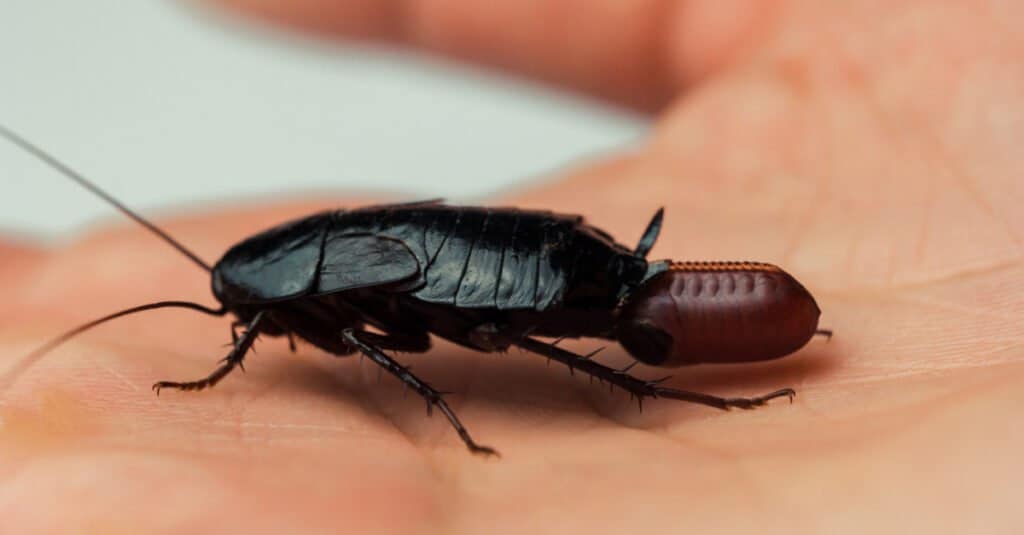
Some species of cockroach carry their egg cases with them until the eggs are ready to hatch
©Yuliia Hurzhos/Shutterstock.com
If female cockroaches don’t hatch their eggs inside their bodies, they deposit them into an egg case, and lay that egg case. Egg cases generally look like tiny, dried kidney beans. Once a female has hatched an egg case, she either carries it with her or deposits it.
German cockroaches are one of the most common pestilential roach species; they’re a prime example of a cockroach that carries its egg case with it. Mother German cockroaches lay their egg case (which is long, thin, and light brown with distinct striations), then carry it around with them until the eggs are ready to hatch. If you see a cockroach dragging what looks like a tiny grain of rice around behind it, it’s probably a mother roach with her egg case.
Depositing Egg Cases
Not all cockroach mothers keep such a keen eye on their eggs; many lay the egg case, then immediately deposit it in a safe place for incubation. Female American cockroaches glue their egg cases to the backs of furniture, or to warm electrical appliances. 70 days later, the eggs hatch and brand new baby cockroaches emerge.
The presence of egg cases is a good indication of an active cockroach infestation. In order to reproduce, roaches need a source of food and a decent place to live. Once they’ve begun reproducing, their numbers can expand exponentially in a very short time. Some cockroach species can lay hundreds of eggs in their lifetime—and each one of those nymphs can create more cockroaches.
Nymphs: Baby Cockroaches
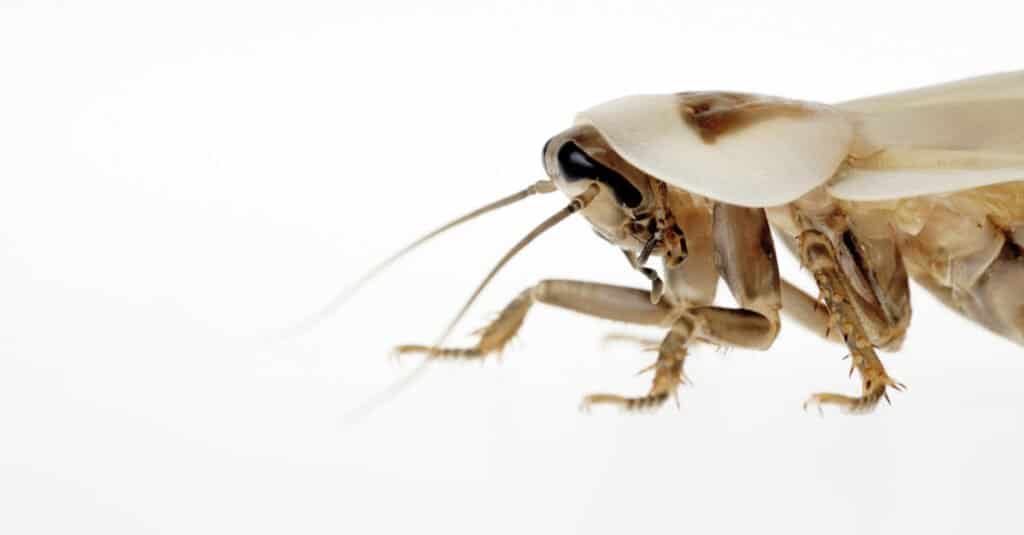
Cockroaches look albino after shedding their exoskeletons.
©Holger Kirk/Shutterstock.com
If you think you’ve seen a white, or albino, cockroach; chances are good that you saw a nymph. Young cockroaches are called nymphs, and they’re characterized by their small size, lack of wings, and almost translucent pale coloring. Most nymphs don’t make it to adulthood, but for those that do—they’re in for both darker coloring and a harder exoskeleton.
To get there, the nymphs need to molt, or, shed their exoskeleton. These shed exoskeletons are one of the signs of a cockroach infestation. Depending on the species, nymphs may molt up to eight times before reaching adulthood. Each time they molt, they grow a little larger and a little closer to adulthood. Nymphs don’t have wings, but they do have six legs, two antennae, and a hunger for just about anything they can get their mouthparts on.
Adulthood: Cockroach Style
With one final molt, nymphs become adults. They may be anywhere from one month old to three years old (depending on the species) at this point. Once they’ve molted into adulthood, they won’t molt anymore. Adults are much darker than nymphs; usually dark brown to reddish-brown. And, depending on the species, they have fully grown wings.
Adults also have hardened exoskeletons; it’s this hardening that gives them their distinct cockroach color. Some species, like the Oriental cockroach, spend most of their lives in the nymph stage, living only a few months once they reach adulthood. But, adulthood is an important step in the cockroach life cycle; it’s when they mate, make baby roaches, and colonize new territories for the next generation.
The End: Death of a Cockroach
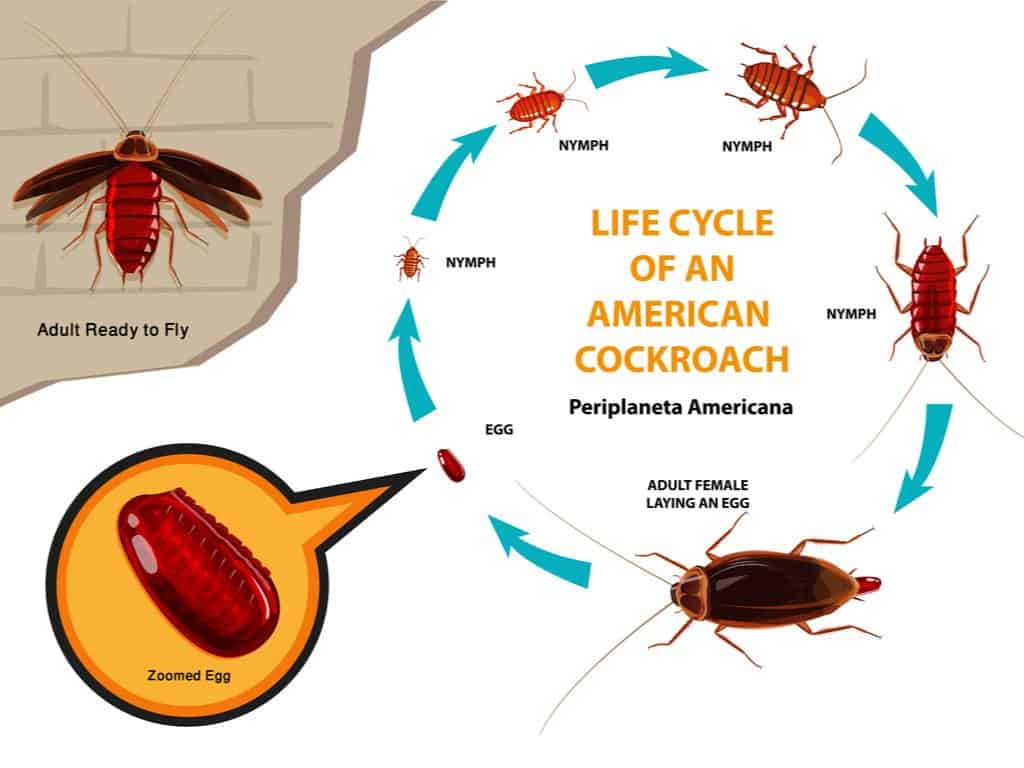
A completed lifecycle of an American cockroach from egg to adults ready to fly.
©Crystal Eye Studio/Shutterstock.com
If you’ve ever dealt with a cockroach infestation, then you know how cockroaches end their lives; dead, on their backs. When a roach dies, its legs contract, pulling in under its body, and it slowly dries up. Other roaches may eat it, and birds certainly aren’t opposed to eating dead cockroaches. If you find dead roaches, it’s important to vacuum them up with a HEPA filter equipped vacuum, as even the cockroach corpses can spread disease or cause allergies.
Like all creatures, the cockroach’s life cycle ends in death. From humble egg, to nymph, to adulthood, the cockroach spends its life doing what we all do; just trying to survive, and maybe make some baby cockroaches.
The photo featured at the top of this post is © iStock.com/ViniSouza128
Thank you for reading! Have some feedback for us? Contact the AZ Animals editorial team.




